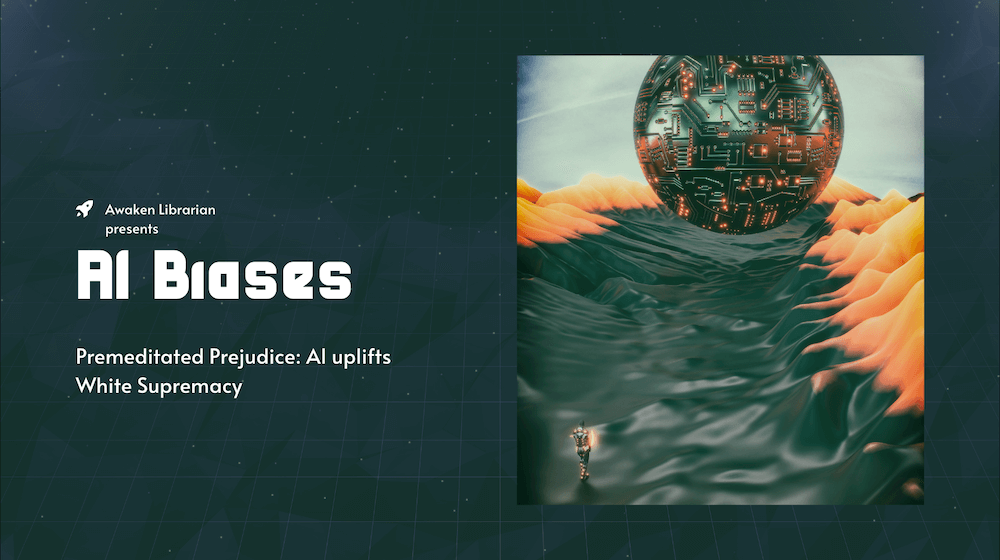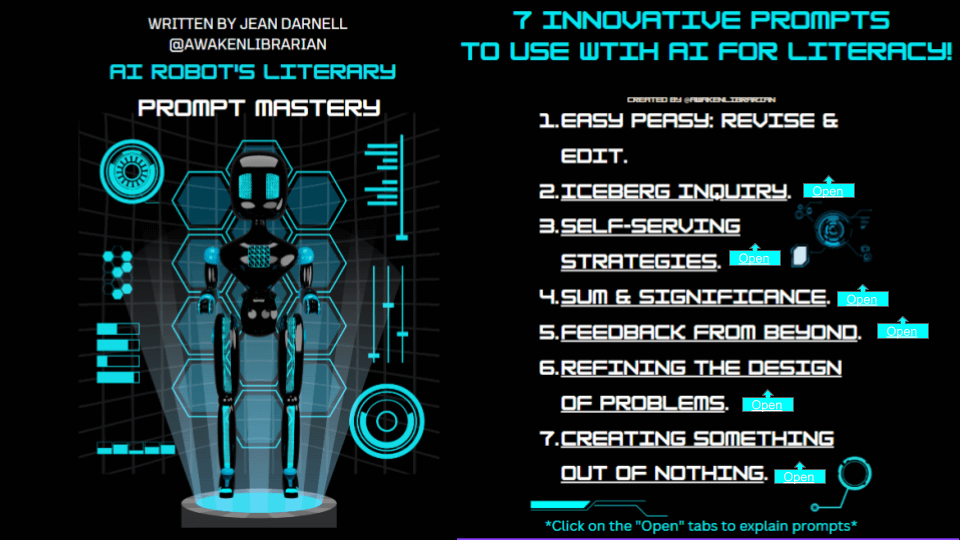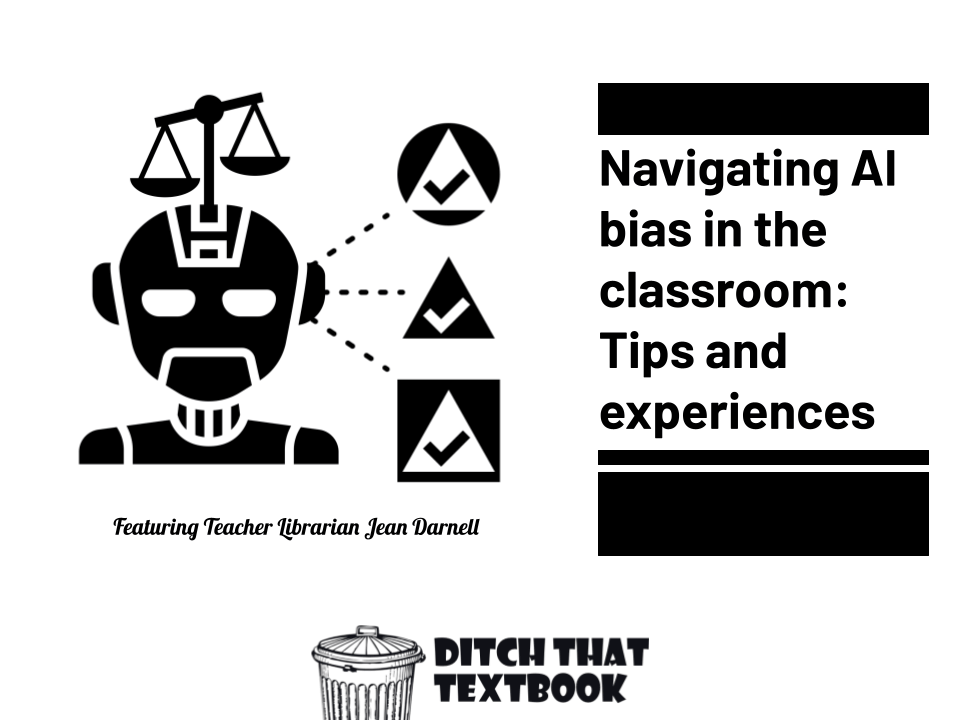
Something was amiss.
Middle school librarian Jean Darnell was disappointed. She wasn't surprised, but she was disappointed.
Everyone had been buzzing about ChatGPT, the new artificial intelligence assistant by Open AI. Darnell likes to keep her students on the cutting edge, trying new technology in her classes.
It also happened to be February, Black History Month. Darnell saw an opportunity -- one she thought was promising.
So she asked ChatGPT to write her an essay about Black History Month.
"What I got back was, let's just say it was less than desirable."
She discussed her experience and talked about steps we can take to confront AI bias in an interview with Ditch That Textbook.
Timestamps from AI for Educators: Navigating bias and engaging students with Jean Darnell:
- The Impact of Bias in Artificial Intelligence 00:05
- Concerns about AI's biases and prejudices 05:47
- Importance of Checking Sources 11:37
- The importance of giving critical feedback with knowledge 17:35
- The power of using Beyonce lyrics in engaging students 23:08
- Excitement about AI and its potential in education 29:09
- AI literacy prompts 35:00
- Starting point for problem-solving 40:49
The short essay it generated included highlights about Black history luminaries like Rosa Parks, Dr. Martin Luther King, Katharine Johnson, and Thurgood Marshall. It discussed enslavement.
Then, it stopped.
"And then that was it," Darnell said.
"I took personal offense to it. There's so much that was missing from that essay that is pivotal, like non-negotiable factors in my culture."
So, what did she do? The Austin, Texas-based librarian took to her blog at AwakenLibrarian.com to write about the experience. The post was noticed and picked up by PBS, who published it here: Educator Voice: Artificial intelligence attempts Black history (and fails).
"My biggest fear with AI?" Darnell asked. "I think it's great. I love interacting with it. I love the exploring. But my biggest fear is that robots carry the same prejudices, biases, you know, whatever type of moral code that is damaging to people that look like me."
What can we do?
Here are some other highlights from the interview:
- Keep in mind the dataset. Artificial intelligence is only as good as the information in its dataset, or what it draws upon to create its responses. Many times, that dataset has gaps, where it's operating without detail and nuance and the full breadth of information that's necessary. When you and your students use AI, keep this in mind -- and don't be afraid to interrogate the results you get from AI.
- Check your sources. If artificial intelligence tools provide the source of its responses, check it out and ask questions about the accuracy. If it doesn't, you can always ask an AI assistant to provide the source of its content. If it doesn't give you the source material you want, take the response it generated with a grain of salt.
- Consider representation. When using artificial intelligence, investigate who's behind it. Who is making the decisions regarding the algorithm and the final product? If diversity is missing, then certain perspectives aren't brought to the table. They might not show up directly in the finished product, but it may eventually shape what AI tools are able to do.
- Encourage everyone to get involved. Sure, we can't touch the code and algorithm that drives artificial intelligence models. But that doesn't mean we can't have an impact. Learn about artificial intelligence -- and about the specific tools you're using. Jean, for example, enrolled herself in an AI bootcamp to learn about artificial intelligence so she would be able to speak about it to her students -- and the teachers she serves.
AI resources from Jean

Resource 1: AI Biases
Jean shared her experience with AI bias and Black History Month in this presentation slide deck. It includes her observations, some writing prompts, and examples from her interactions with ChatGPT.

Resource 2: AI Literacy Prompts
How can students learn to write prompts and interact with AI assistants?
Jean has compiled her "7 Innovative Prompts to use with AI for Literacy." Several of the seven prompts include documents where she shares a prompt and an example response.
Access the slide deck here. Then, click the cyan "open" boxes to access the documents that Jean shares.
More about AI from Jean
Continue in the video -- AI for Educators: Navigating bias and engaging students with Jean Darnell -- and you'll find how Jean promotes student engagement and authentic interaction using the AI assistant, ChatGPT. She shares some ideas -- and her brilliant out-of-office email reply that uses lots of Beyonce song titles. (It was created by ChatGPT!)


